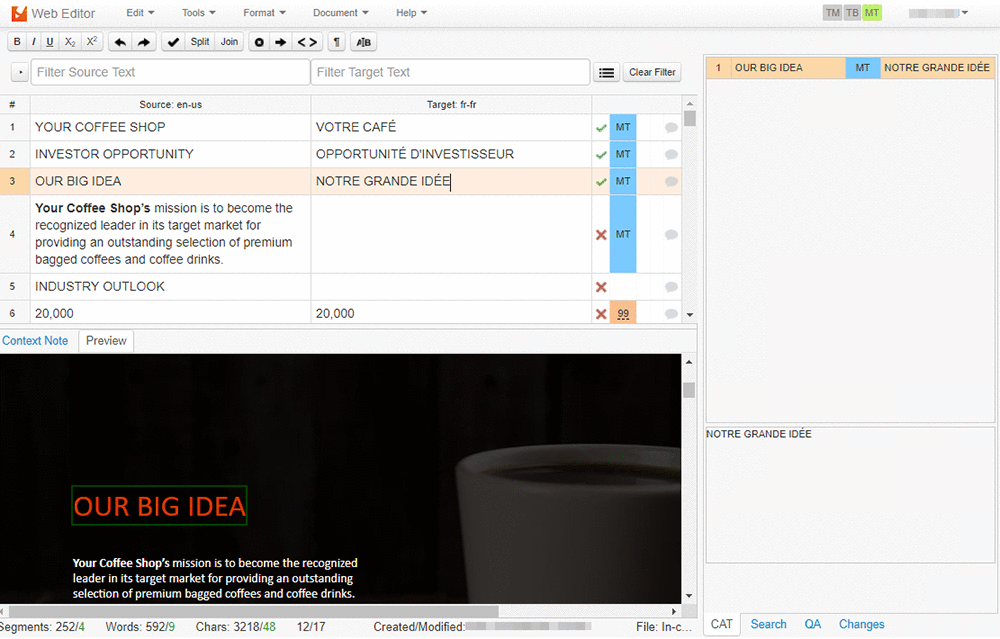This is a guest blog post by Andrea Tabacchi, the Solution Architects team lead at Memsource.
Memsource is always looking out for exciting new integrations that enhance its cutting-edge translation solutions. With machine translation (MT) continuing to be a hot topic in the localization industry, Memsource is focusing on integrating with innovative MT engines that meet customers’ growing MT needs.
In particular, Memsource strives to offer neural machine translation (NMT) engines, such as Amazon Translate. NMT is proving to be a highly influential technology. The quality of NMT output continues to improve, making it a powerful productivity tool and therefore more in demand. Amazon Translate, with its deep learning methods, has started to make its mark in the translation and localization industry. It’s become a priority to add it to Memsource’s range of MT engines. It is also a natural fit for existing AWS customers.
Another draw is that the engine aligns with Memsource’s enterprise focus, particularly business to consumer (B2C). Amazon Translate is built on Amazon’s expertise in consumer products and communication, and the localization problems they have solved using machine translation.
How does the Memsource-Amazon Translate integration work?
Memsource and Amazon Translate are connected via the Amazon Translate API. This means that users can set up Amazon Translate in their Memsource account and use the results from Amazon Translate in real time directly from within the Memsource translation workbenches, Memsource Web Editor, and Desktop Editor.

MT engines, such as Amazon Translate, can be incorporated into translation workflows to increase translator efficiency and reduce costs. The MT engine suggestions are inserted to produce a first draft of the translation. Using MT suggestions results in faster turnaround times than if the text is translated from scratch. The draft can then be sent for post-editing.
In Memsource, the level of post-editing can be monitored using the post-editing analysis. This shows the difference between the MT suggestions and the edited version. It enables translation buyers to determine the post-editing effort. Users can also access information on MT performance by language pair, which can help develop a more refined MT strategy.
Want to try out the integration? Set up a free trial in both Memsource and Amazon Translate.
About the Author
Andrea Tabacchi is the Solution Architects team lead at Memsource where he utilizes his extensive experience in building customer-centric language technology solutions for multinational corporations and global translation companies. Prior to Memsource, Andrea spent 11 years on the LSP side where he served in several roles in language technology, from Localization Engineering to Technology Director.